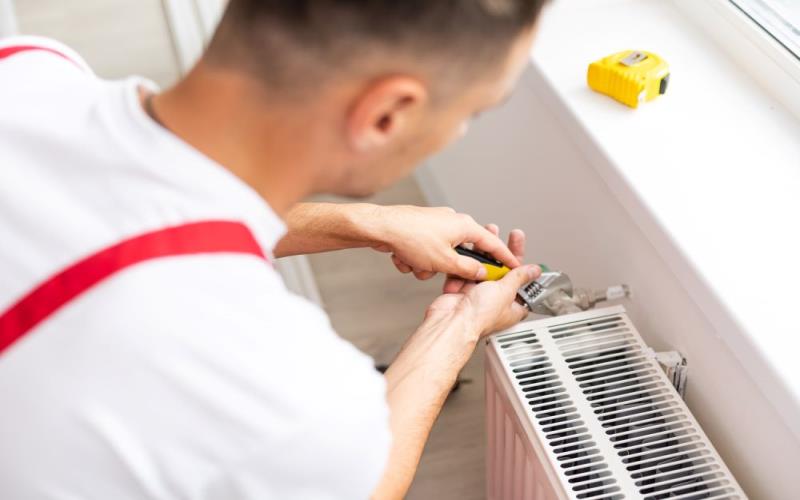When it comes to ensuring your home stays warm during colder months, an efficient heating system is essential. A proper installation can make all the difference in the comfort of your living space, energy savings, and long-term system performance. Whether you’re upgrading an existing system or installing a new one, understanding the basics of heating installation is crucial. This guide will walk you through the important aspects of efficient heating installation, including choosing the right system, understanding installation steps, and maintaining your new system for years of optimal performance.
Understanding the Different Types of Heating Systems
Before diving into installation, it’s important to understand the various types of heating systems available. The most common heating systems include forced air, radiant heat, and hydronic systems. Forced air systems, which are popular in many homes, use ducts to distribute heated air from a furnace throughout your home. Radiant heating, on the other hand, involves heating floors, walls, or ceilings, allowing warmth to radiate into the space. Hydronic systems use hot water, circulated through pipes, to heat the air.
Each system has its benefits, depending on your home size, insulation, and personal preferences. When choosing a system, it’s essential to consider energy efficiency, installation costs, and your home’s heating needs.
Selecting the Right Size Heating System
One of the most critical factors in heating installation is ensuring you select the right size system for your home. If the system is too small, it will struggle to heat your home efficiently, leading to higher energy bills and wear on the system. A system that is too large can also be inefficient, as it will cycle on and off more frequently, causing unnecessary wear and tear.
To determine the right size, a professional like Steele Brothers Heating Inc can perform a load calculation, which takes into account factors such as square footage, insulation, and local climate conditions. Proper sizing ensures optimal energy efficiency and longevity for your heating system.
Choosing Between Gas, Electric, and Oil Heating
Heating systems also vary based on the fuel they use. Gas heating is a popular choice for many homeowners due to its efficiency and relatively low cost. Gas furnaces or boilers provide consistent heat and can be a cost-effective option in areas with natural gas availability. Electric heating, while generally more expensive to operate than gas, can be a good choice for homes without access to gas lines. Electric systems are easy to install and require less maintenance, making them a low-maintenance option. Oil heating systems are another choice, especially in rural areas where natural gas might not be available.
While oil systems are efficient, they require regular maintenance and fuel deliveries, which can add to long-term costs. Evaluating your fuel options based on availability, cost, and efficiency will help you make the best choice for your home.
Installation Steps to Ensure Efficiency
The installation process is a crucial part of ensuring your heating system runs efficiently. Start by preparing your home for installation, which may involve clearing the area around your current heating system and making any necessary repairs to the ducts or pipes. A licensed professional will handle the bulk of the installation, including setting up the furnace or boiler, connecting it to the appropriate fuel source, and ensuring the ducts or radiant system is properly calibrated.
After installation, the system should be tested to ensure it operates correctly. Proper installation is key to maximizing efficiency and reducing the need for frequent repairs or adjustments down the line.
Importance of Regular Maintenance for Efficiency
Once your heating system is installed, regular maintenance is essential for keeping it running efficiently. Annual maintenance checks can help identify any issues before they become major problems, ensuring your system runs at peak performance. Common maintenance tasks include changing filters, inspecting ductwork for leaks, cleaning the system, and checking for any signs of wear.
Regular maintenance can extend the lifespan of your heating system, prevent unexpected breakdowns, and help maintain energy efficiency. A well-maintained system also helps improve indoor air quality by keeping dust and debris out of your ducts and filters. It’s always a good idea to schedule maintenance with a reliable service provider to keep your system in tip-top shape.
Making the Most of Your Heating System’s Efficiency
In addition to proper installation and maintenance, there are a few simple steps homeowners can take to improve the efficiency of their heating systems. First, ensure your home is well-insulated to keep heat from escaping, especially in areas like attics, windows, and doors. Sealing drafts can also help prevent heat loss and reduce the workload on your system.
Additionally, using a programmable thermostat allows you to control the temperature in your home efficiently, lowering heating costs by adjusting the temperature when you’re not home or when you’re sleeping. These small changes can make a significant difference in how efficiently your heating system operates, leading to long-term savings.
Conclusion
Efficient heating installation is a vital aspect of keeping your home comfortable during the colder months while saving on energy costs. By understanding your heating options, choosing the right system, and investing in proper installation and maintenance, you can enjoy the benefits of a warm and energy-efficient home. Whether you’re considering a gas, electric, or oil heating system, ensuring the correct sizing and installation by a trusted professional will set you up for success. Regular upkeep is key to maintaining system performance over time, ensuring that your home stays warm and your energy bills stay manageable.





